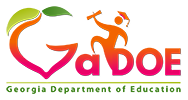Help Every Child Find Great Books to Read This Summer!
Georgia is proud to be part of a nationwide summer reading initiative and challenge Georgia students to read every day during the summer break.
- The Council of Chief State School Officers, in partnership with MetaMetrics®, are coordinating a national, state-led summer learning challenge to bolster student achievement during summer break.
- Georgia's challenge is focusing on reading to:
• raise national awareness of the summer loss epidemic,
• share compelling research on the importance of personalized reading activities, and
• provide access to a variety of free resources to support targeted reading and the initiative as a whole.
Research studies show that --
reading loss occurs for most children when
they are not in a formal learning environment or not engaged in any form of
educational activities during the summer.
students can have up to a 2-3 month loss
in reading ability over summer.
lower income students may suffer most due
to lack of books in the home and transportation access to public libraries.
rural area students also lack easy access.
innovative partnering of schools, publishers,
and public libraries has great promise for solving the summer reading loss
dilemma.
Summer reading loss can be minimized.
Research shows that children who read during the summer do not have to suffer this reading loss and may even show some growth in their reading ability.
• Harvard University Professor Dr. James S. Kim has demonstrated that when students read a minimum of eight high-interest, ability-appropriate books over the summer, their reading skills grow as much as students who attend summer school.
Citation: Kim, J.S. (2005). Project READS (Reading Enhances Achievement During Summer): Results from a Randomized Field Trial of a Voluntary Summer Reading Intervention. Paper presented at Princeton University, Education Research Section, November 7, 2005.
Using
Lexiles for Summer Reading:
Lexiles can be used to target reading
materials for the student in order to maximize learning and growth.
One way to
select appropriate summer reading materials is to find out the student’s
reading level. There are two ways to
approximate a Lexile measure of a student.
- Students
can determine their own Lexile measure by looking at the Lexiles associated
with the last 4 or 5 books they read during the school year. Choose books
around the Lexiles of the book(s) they felt most comfortable reading.
- Visit
the Find a Book site and enter the grade level of the student and
check the statement that best describes the student’s comfort with reading, and
a Lexile range will be generated.
Another way to
target summer reading materials is to have students read materials that fall
within the demand of text ranges by grade level. These ranges represent the demand of text
that students should be reading to be college and career ready by the end of
Grade 12. Using these ranges may help
identify challenging reading material for students.
Text Demand by Grade
Lexile
|
Text Measures
|
|
1
|
190L to 530L
|
|
2
|
420L to 650L
|
|
3
|
520L to 820L
|
|
4
|
740L to 940L
|
|
5
|
830L to 1010L
|
|
6
|
925L to 1070L
|
|
7
|
970L to 1120L
|
|
8
|
1010L to 1185L
|
|
9
|
1050L to 1260L
|
|
10
|
1080L to 1335L
|
|
11 and 12
|
1185L to 1385L
|
Find a Book is a great way
to generate personalized reading lists using a student’s Lexile score. Using a student’s Lexile measure is a great
way to get started identifying books at a student’s appropriate reading level
for summer reading.
Remember, a
Lexile measure is a measure of text complexity only. It does not address the subject matter, text
quality, or age-appropriateness of the content of a reader’s interests. The Lexile measure is one piece of
information that you can use when selecting books. Help students choose books around their
interests as well as a variety of books that might expand their interests.

